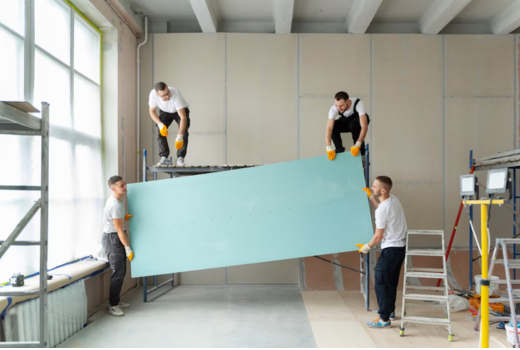- By admin-theme
- Uncategorized
- 0 Comment
What’s the Difference Between the Best Wall Tile Adhesive in India and Ordinary Cement?
Tiles are no longer an element that is used for construction. They are now an integral element of design as well as durability and aesthetics in commercial and residential areas. It doesn’t matter if it’s the bathroom floor, kitchen walls or even external wall cladding tiles, there is always a question that comes up in the process of installation: Should you go with normal cement or a special tile adhesive?
From a first look, they could appear to serve the same purpose, keeping tiles in place. However there are significant differences in their performance as well as strength and endurance. Let’s look at the differences between the top wall tile adhesive from India and the traditional cement so that you can choose the best option for your particular project.
1. Composition and Bonding Ability
Ordinary cement is made up of clay, limestone and various other minerals. It requires water and sand to form mortar. It is then used to fix tiles. Although this technique has been utilized for decades but the strength of bonding is not as strong, particularly in the case of modern tiles which are more dense and heavy.
Tile adhesives on the contrary, are scientifically engineered materials made of Polymers, Fine Sand and other additives. This unique blend makes them greater adhesion between the substrate and tile. Adhesives are made to work with larger, more vitrified or porcelain tiles, which traditional cement is often unable to support.
2. Water Resistance and Moisture Protection
Tile adhesives are made to resist the penetration of moisture. A variety of them are water-resistant, and guard tiles from popping or cracking due to moisture. This makes adhesives ideal choice for areas with exposed to high levels of water, like outdoor swimming pools as well as wall cladding.
3. Thickness of Application
Cement mortar requires a strong layer of material, often up to 20 millimetres, to hold tiles. This doesn’t just add burden but also requires more materials. Contrarily, the top wall tile adhesive available in India permits tiles to be fixed using an even thinner layer typically between 3 mm and 6 millimeters.
The thin coating minimizes shrinkage, assures uniformity and prevents uneven surfaces that commonly happen with cement mortar.
4. Setting Time and Workability
Tile installation can take longer, and it can be difficult to make adjustments after tiles have been laid. Tile adhesives are developed to work better. They allow for an extended time for adjustments, yet they set more quickly and evenly after being they are placed.
5. Durability and Longevity
Tiles that are fixed using cement mortar might initially appear good, but problems often occur after a couple of years -hollow sounds, tiles falling loose, surface cracks. The reason for this is that cement doesn’t bond strongly enough to low-porosity tiles.
6. Suitability for Different Tile Types
The market today offers a broad selection of tiles, including glass, tile, mosaic, and natural stone. Cement mortar is not as versatile and has a difficult time with vitrified tiles and those that are low absorbent.
Tile adhesives come in various grades for a variety of uses, starting from wall tile made of ceramic, to high-end exterior cladding. For instance tile manufacturers for exterior wall cladding often suggest specialized adhesives since cement alone is not able to take on the weight and exposure of the cladding.
7. Aesthetic Finish
An uneven cement mortar bed could result in lippage, the obvious difference in height between tiles. It’s not just unprofessional but it can also cause discomfort when flooring is installed.
When tile adhesives are brushed using notched trowels, they produce smooth surfaces. This helps ensure tiles are at an appropriate level and gives a smoother, more polished look.
8. Cost Consideration
It’s easy to see that cement mortar may appear more affordable than adhesives. However, when you take into account the greater material consumption along with the more dense layers and the potential for repairs in the future, adhesives usually prove to be more affordable.
For instance if tiles break off due to weak bonding with cement the cost of reinstallation overshadows the modest initial savings.
Conclusion
Though cement may be the popular method for attaching tiles to the wall, it will not be sufficient for the current construction techniques. The most efficient wall tile adhesive made in India offers superior bonding properties durability, endurance, waterproofing and finishing which makes it the ideal option for the long term for homeowners, architects and builders alike.
In the end taking your time will mean less repairs and a greater ROI on your investment in the future. This is something that businesses like Rock Build recognize in their commitment to offering top-quality construction services.

